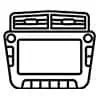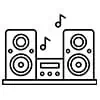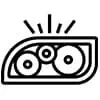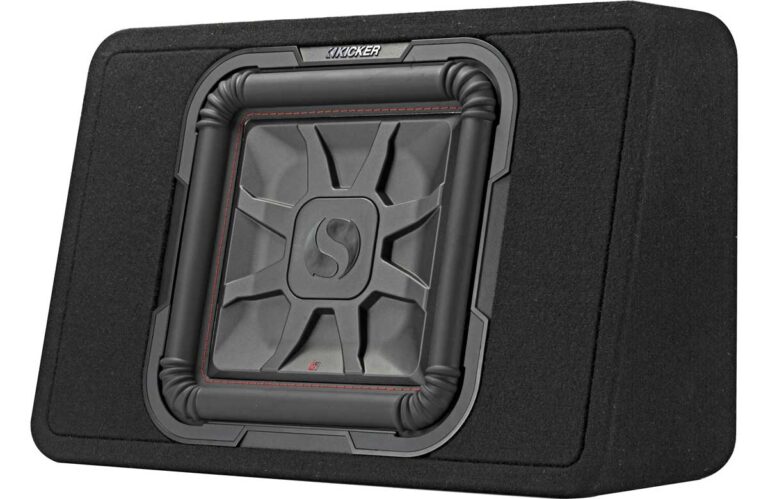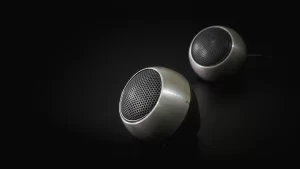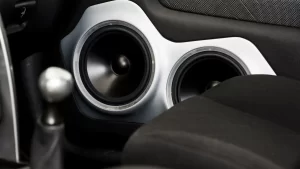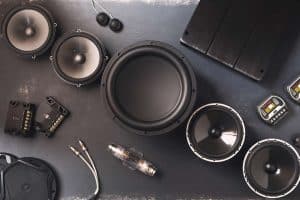After considering external factors such as subwoofer placement, amplification, and crossover, a bass boost from an aftermarket amplifier is a great start if you need some fine-tuning. If you have a multi-band EQ, that means balancing and optimizing everything you get by reading your RTA graph. They will have gaps in the selection and control of bass, mid, treble, high, and narrow frequencies and will have to adapt to narrow bandwidths.
Find an appropriate balance between the sound quality of the front and rear speakers. Eliminate bass that is too deep for drums and kicks, which can cause distortion in your speakers.
If you’ve ever played rock, rap, country, or classical music in your car, you’ll be amazed how a car subwoofer cranks up the bass tone and creates a sense of fullness in your favorite music, loud or quiet, no matter where you play it. This means that the human ear cannot determine what the low frequencies of the bass tones sound like unless they come from inside the car and are delivered with the same force by a subwoofer under the seat. This is bad for the ears and makes the music sound worse.
Powered subwoofers are great, but inexpensive sub amplifiers are also good. Use a subwoofer that reproduces the low frequencies and reduces the demand for other speakers in the car.
This article explains how you can improve the bass in your car by upgrading to a kind of better amplifier and subwoofer to adjust and control your system for more balanced performance.
The cold, hard truth is that you can’t get good bass out of a sound system without a subwoofer and amplifier. If you are still not happy with the quality of bass in your car, you have no other choice but to hire a professional to tune it or switch to a more powerful amplifier and subwoofer (or both). Getting the bass of your car to be a professional is a good idea, but you don’t have to become familiar with the tuning process; you have the know-how and the tools to get the job done.
While fine-tuning your subwoofer and amplifier is critical to achieving the best possible bass reproduction, it is important to note that your audio system and other amplifiers (especially other amplifiers) also need to be tuned. Be aware that a well-tuned system with good speaker performance does not need gimmicks to make it sound right. If you tune a system, you are welcome to use your bass booster or other features if you like what they sound.
If you want to force your head to tune your gear, this is one of the most important things you can do. You need to work on improving the installation of the speakers. If you can hear enough bass, then it’s about adapting.
If 75% of your favorite music is playing on your headphones and bass and treble settings are flat and all other settings are put in place, you can turn up the bass boost to hear what bass sounds like. Fine-tuning the sound of the bass, treble, and midrange controls with other EQ adjustments as required. Try different EQ combinations to reduce the bass or treble boost until your music sounds just right.
If you’re feeling risky and don’t mind turning up the volume for longevity, the Bass Boost is a great way to increase the volume of your bass, but can be difficult to use and difficult to adjust correctly. If you want to turn up your bass boost, make sure you reject the win. A small boost gives your bass notes more kick without distortion.
Every subwoofer is different, so it’s up to the ears to find the right combination of bass boost and gain, but the bottom line is: the higher the output, the more distorted everything gets.
If the frequency of bass increases is set to off, turn the gain on your radio to a maximum of 80% while music plays, tune the gain down until you hear no more distortion, and then turn up again until you hear distortion again.
If you want more bass from the subwoofer of your car, then you can use the Bass Boost feature built into your amplifier. The bass boost button is widely used on aftermarket stereo head units, self-powered PA speakers, and boom boxes. Bass Boost makes your bass sound better at certain frequencies, and you can adjust the amplifier the way you want your bass to sound.
If we apply the concept of bass amplification since its invention, we can hear extreme frequencies in the lower dB range. However, since the opposite is the case at higher volumes, a bass boost at higher dB allows you to perceive a bass gain at higher volumes.
Based on tempo, the Car Bass Max Boost is great for songs that are played while walking. It has a pace of 136 with cruise markings on its Allegro that is fast, fast, and bright.
I was surprised that the sub did not explode in the two-month period in which the amplifier was cut every time you crank it up – that is, you have to find the maximum clean output level. Once this has been done, the loudspeakers and subwoofers should be distortion-free up to 75%.
If your bass is not sufficient for your needs, you will need to upgrade to a larger subwoofer and a more powerful amplifier. If the bass in a speaker is over the 75% limit, lower the amplification of your subwoofers or amplifiers so that it blends with your speakers. Do not adjust the entire range of the speaker or amplifier to the subwoofers.
In case of a small set of band subwoofers, a bass tuning is provided. The optimal setup is that the speakers cover a high-frequency range and the subwoofer covers the lower frequency range so that there is no gap in the frequency coverage.








